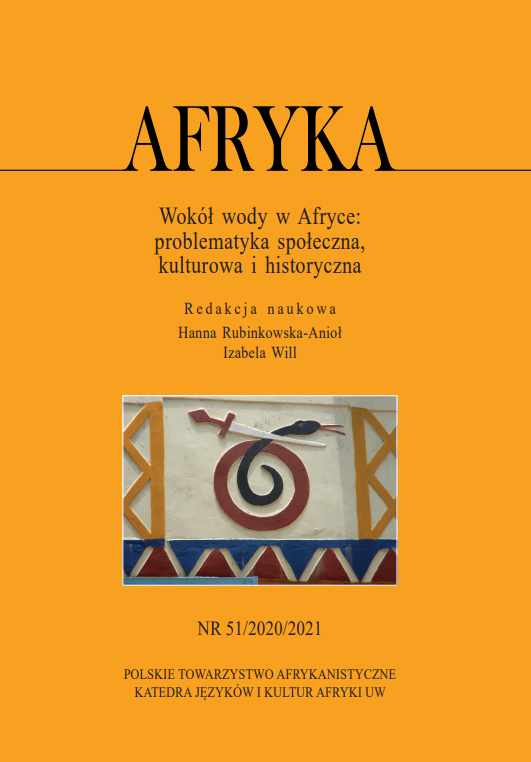Artykuły
Abstract
The Zambezi River plays an extremely important role in the rituals of the Batonga people who inhabit areas of Zimbabwe and Zambia. The article traces how ceremonies changed after the construction of the Kariba Dam in 1959 when the entire people were displaced from their traditional settlements. This fact put the Batongas on two sides of the great river, which made mutual contacts difficult and led to economic and religious differences. The aim of this article is to show water rituals in the face of a changing reality that leads to their change and, more importantly, to a reduction in their practice.
References
- mbira.org 2020. https://mbira.org/what-is-mbira/mbira-music/the -mbira-instrument/, dostęp z dnia 29 listopada 2020.
- brittanica.com 2020. http://www.brittanica.com/topic/Kariba-Dam/, dostęp z dnia 20 listopada 2020.
- victoriafalls-guide.net 2020. https://www.victoriafalls-guide.net/african-mythology.html/, dostęp z dnia 23 listopada 2020.
- victoriafalls24.com 2020. https://victoriafalls24.com/blog/2014/03/21/the-legend-of-nyami-nyami/, dostęp z dnia 20 listopada 2020.
- Natural History Museum Zimbabwe 2020. http://naturalhistorymuseumzimbabwe.com/batonga/, dostęp z dnia 22 listopada 2020.
- Arnold, M. 1981. Zimbabwean stone sculpture. Bulawayo: Books of Zimbabwe.
- Bryant, A.T. 1964. A history of the Zulu and neighbouring tribes. Cape Town: C.Struik.
- Mawere, Munyaradzi. 2016. Heritage practices for sustainability: Ethnographic insights from the BaTonga Community Museum in Zimbabwe. Mankon, Bamenda: Langaa RPCIG.
- Piłaszewicz, Stanisław. 1996. Słownik mitologii i religii Czarnej Afryki. Warszawa: Dialog.
